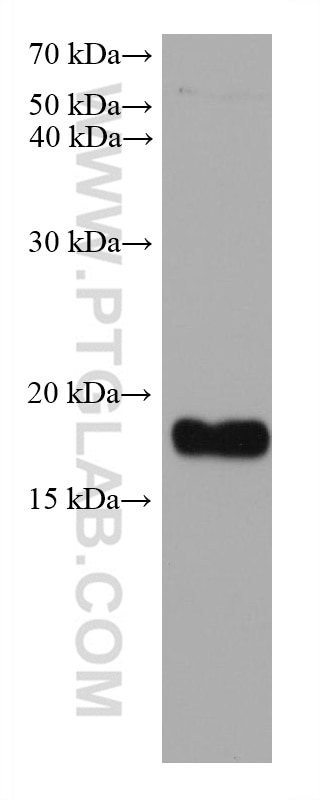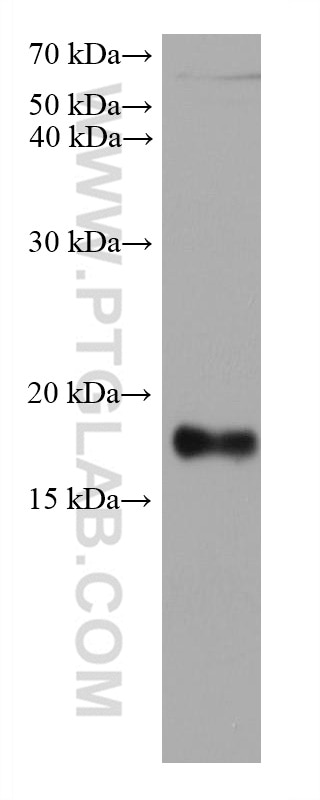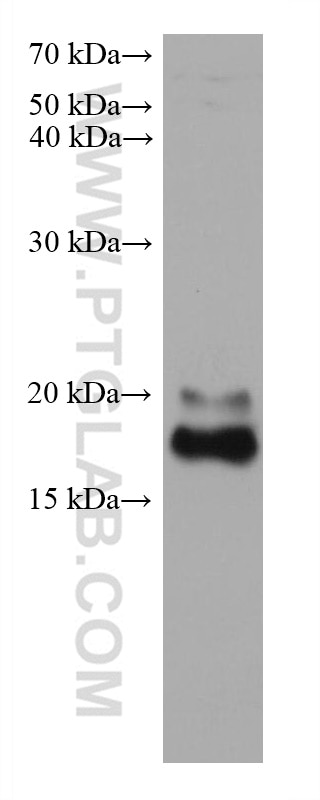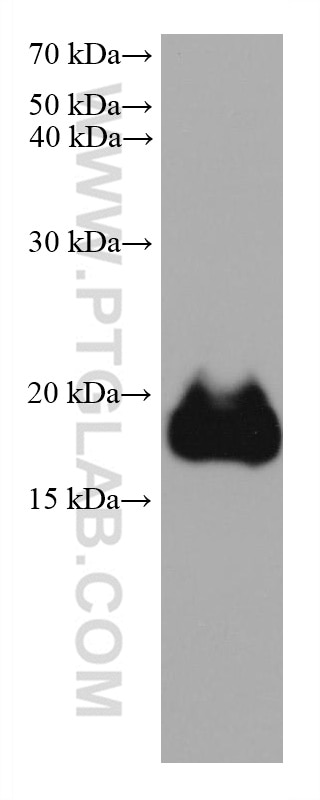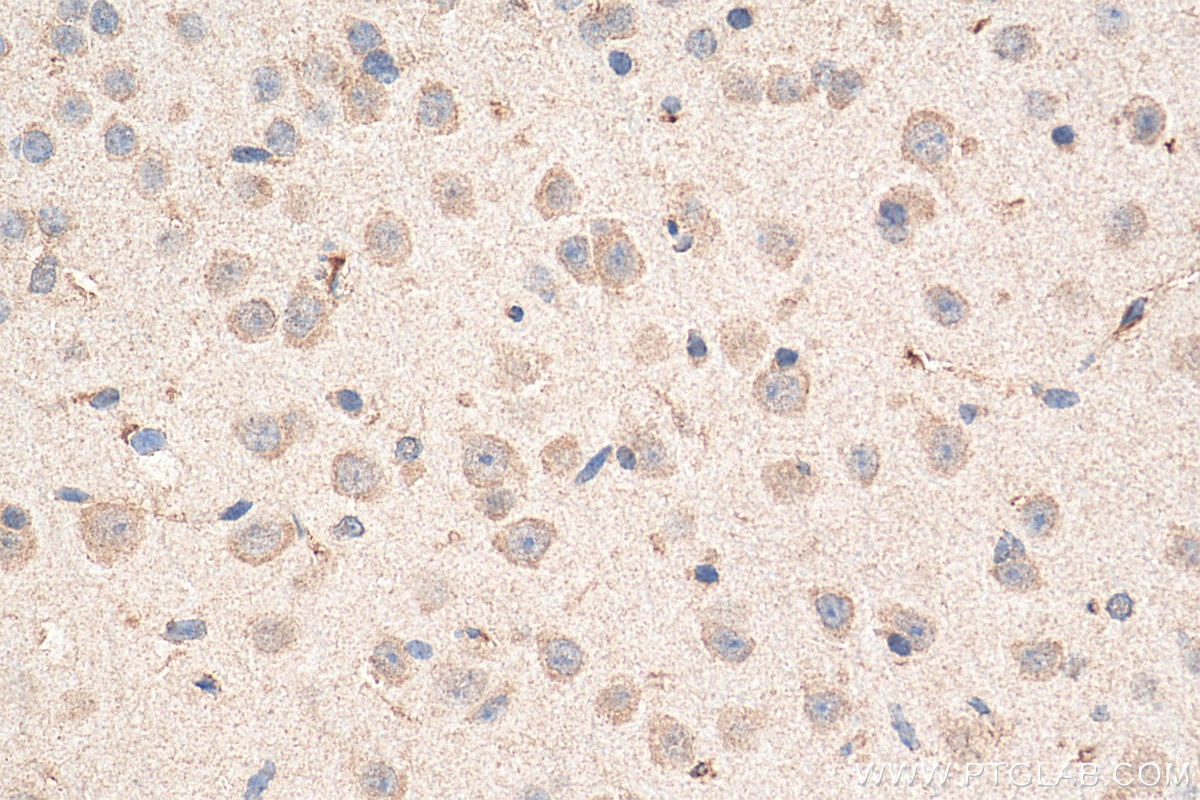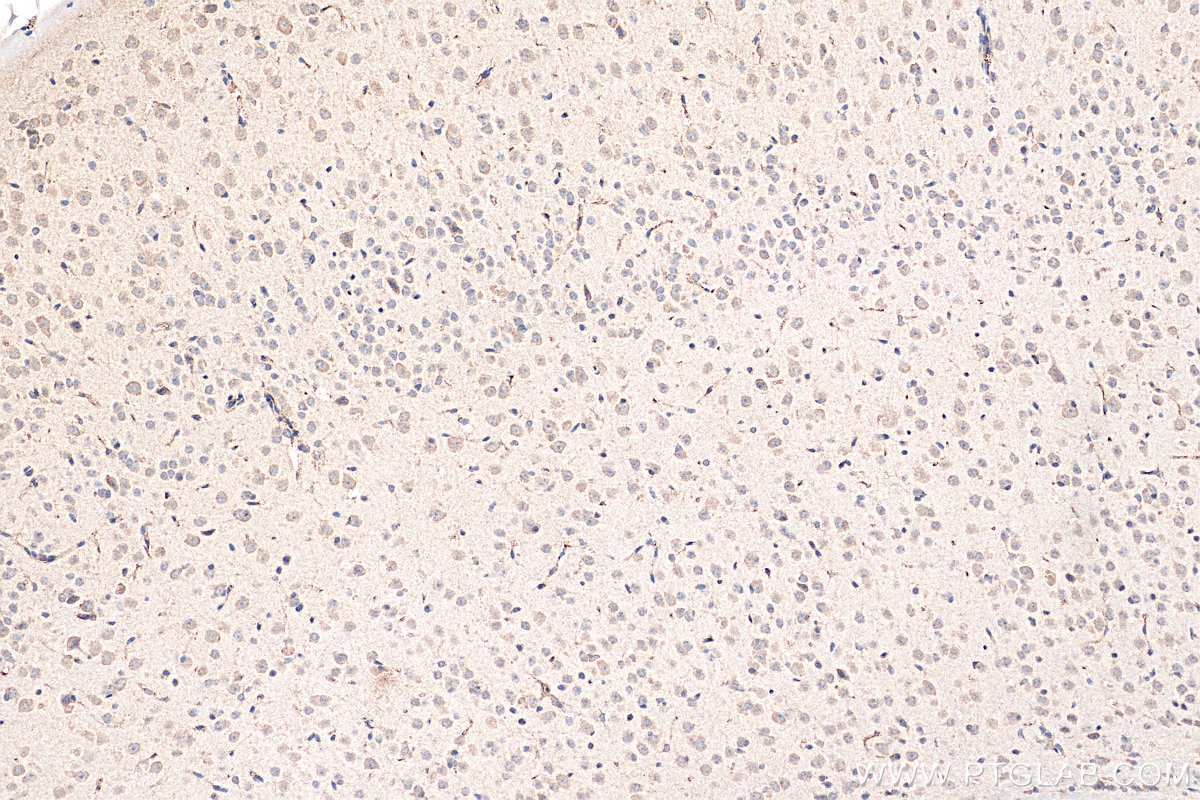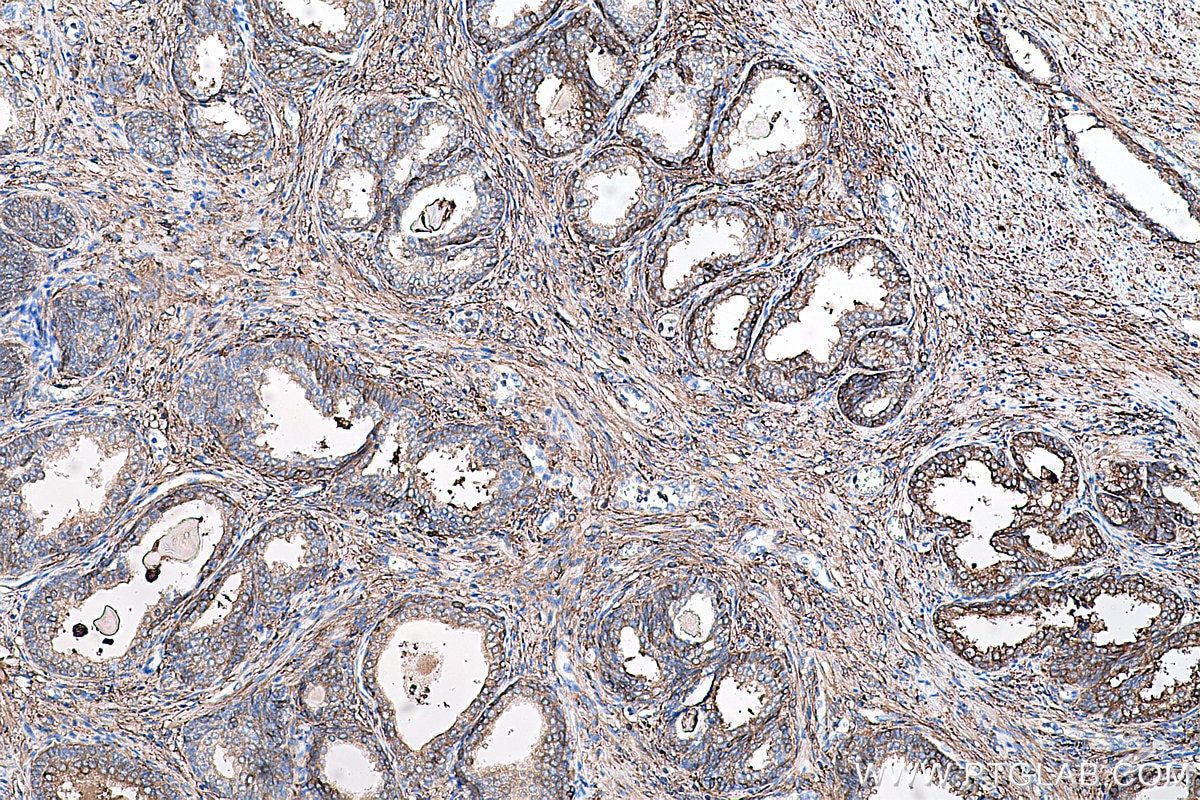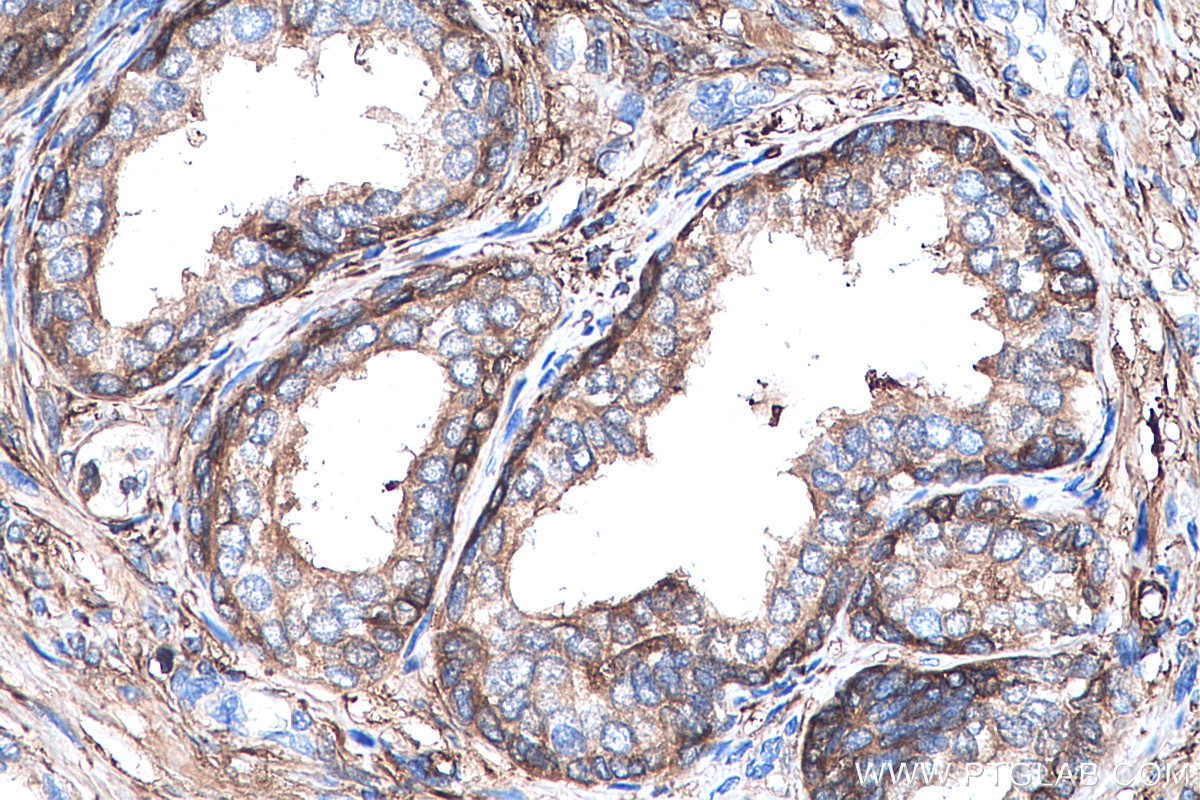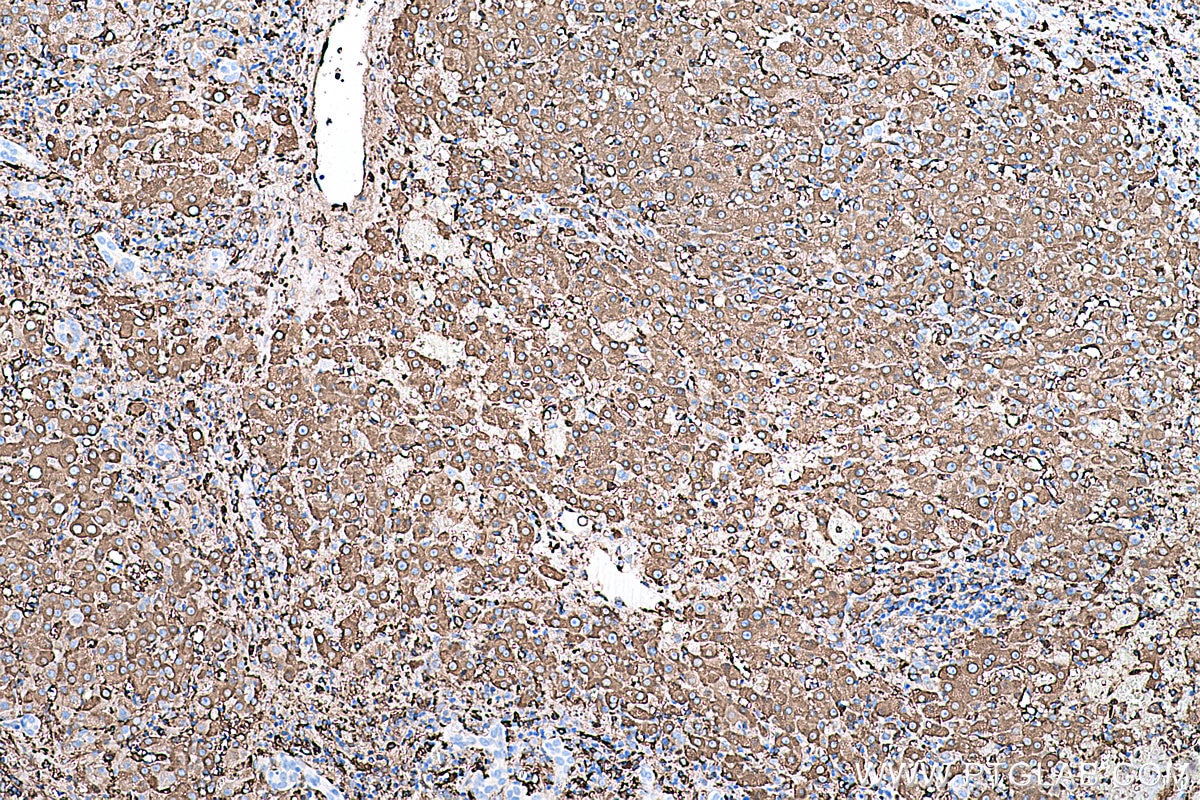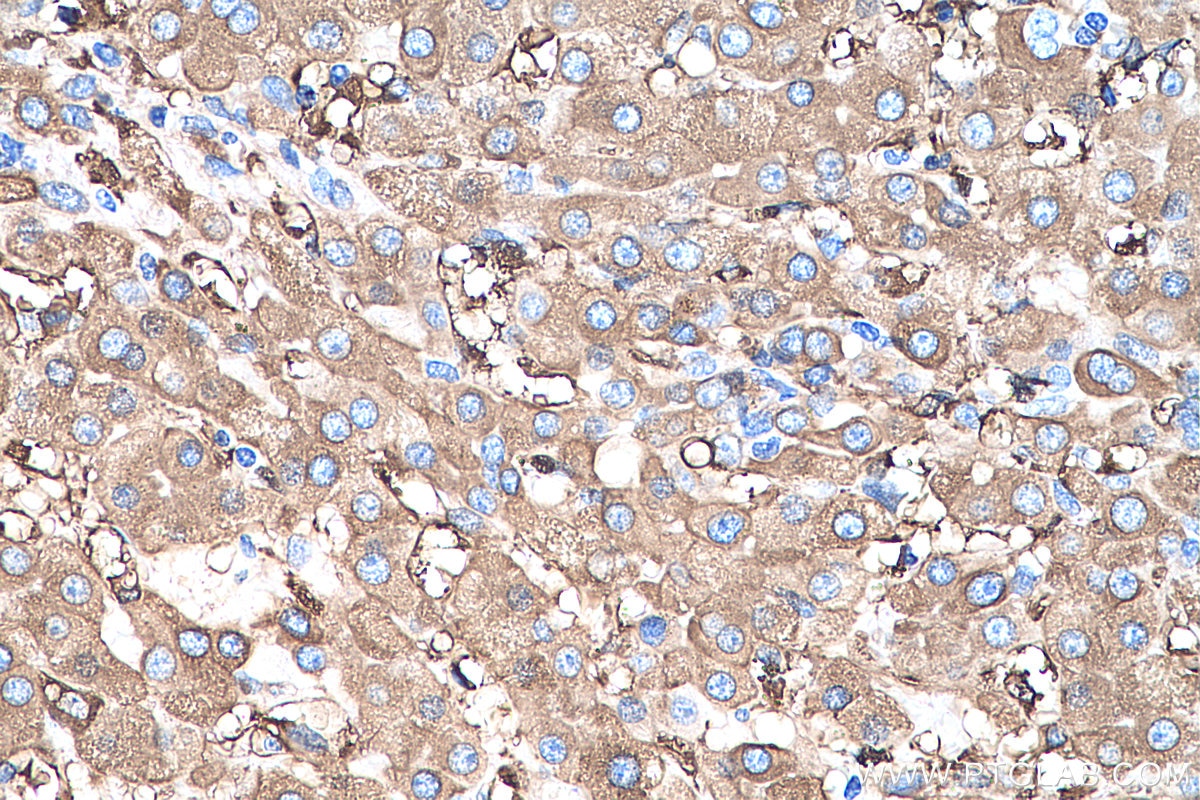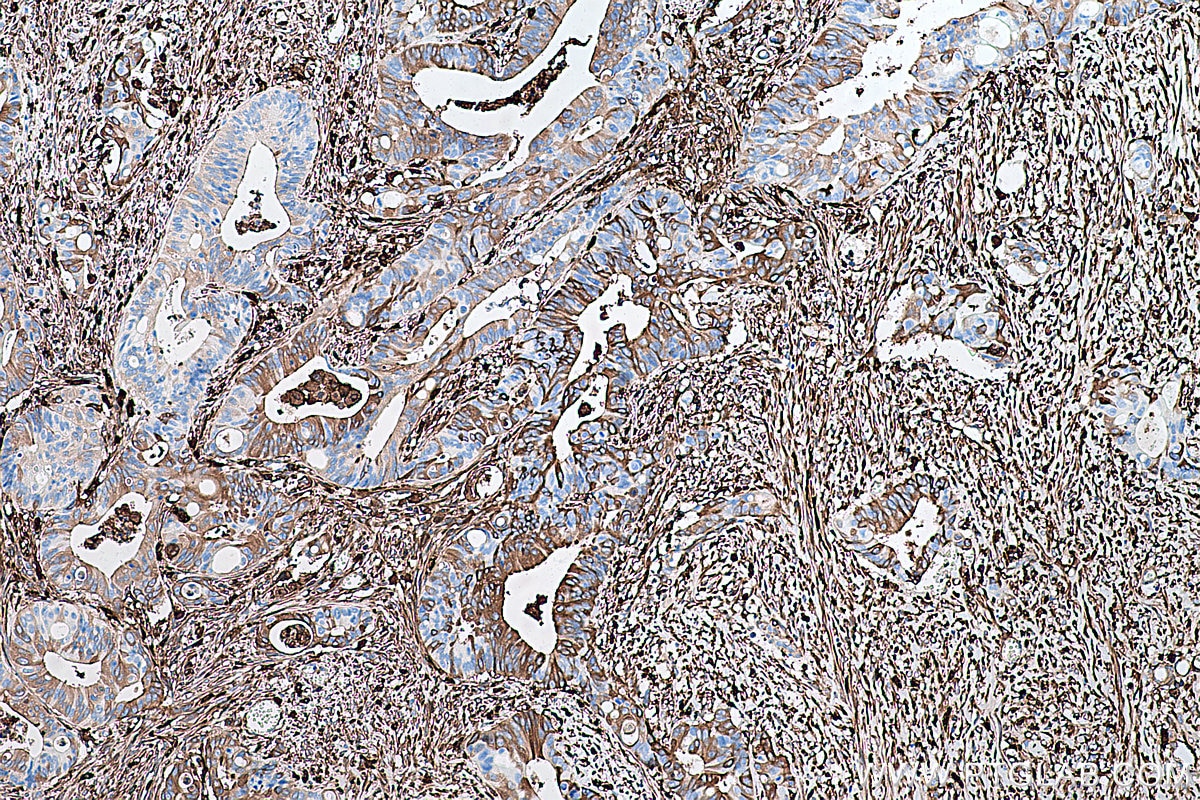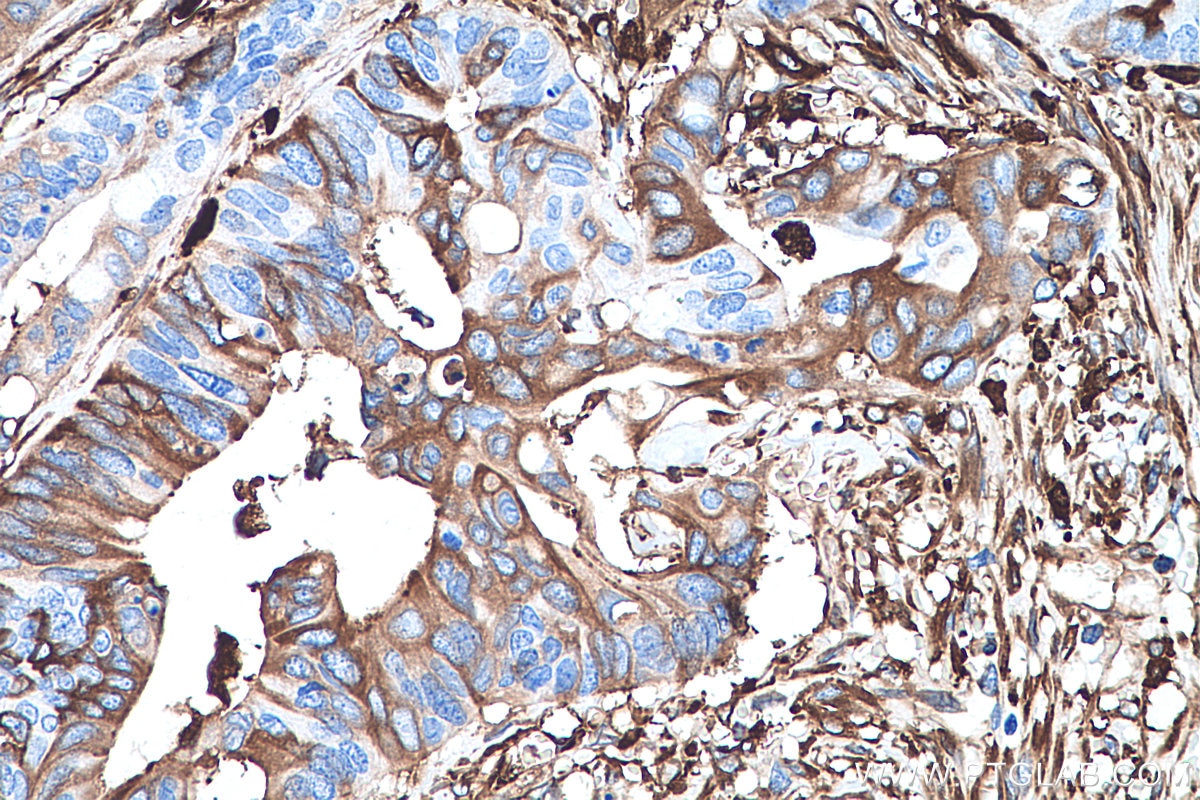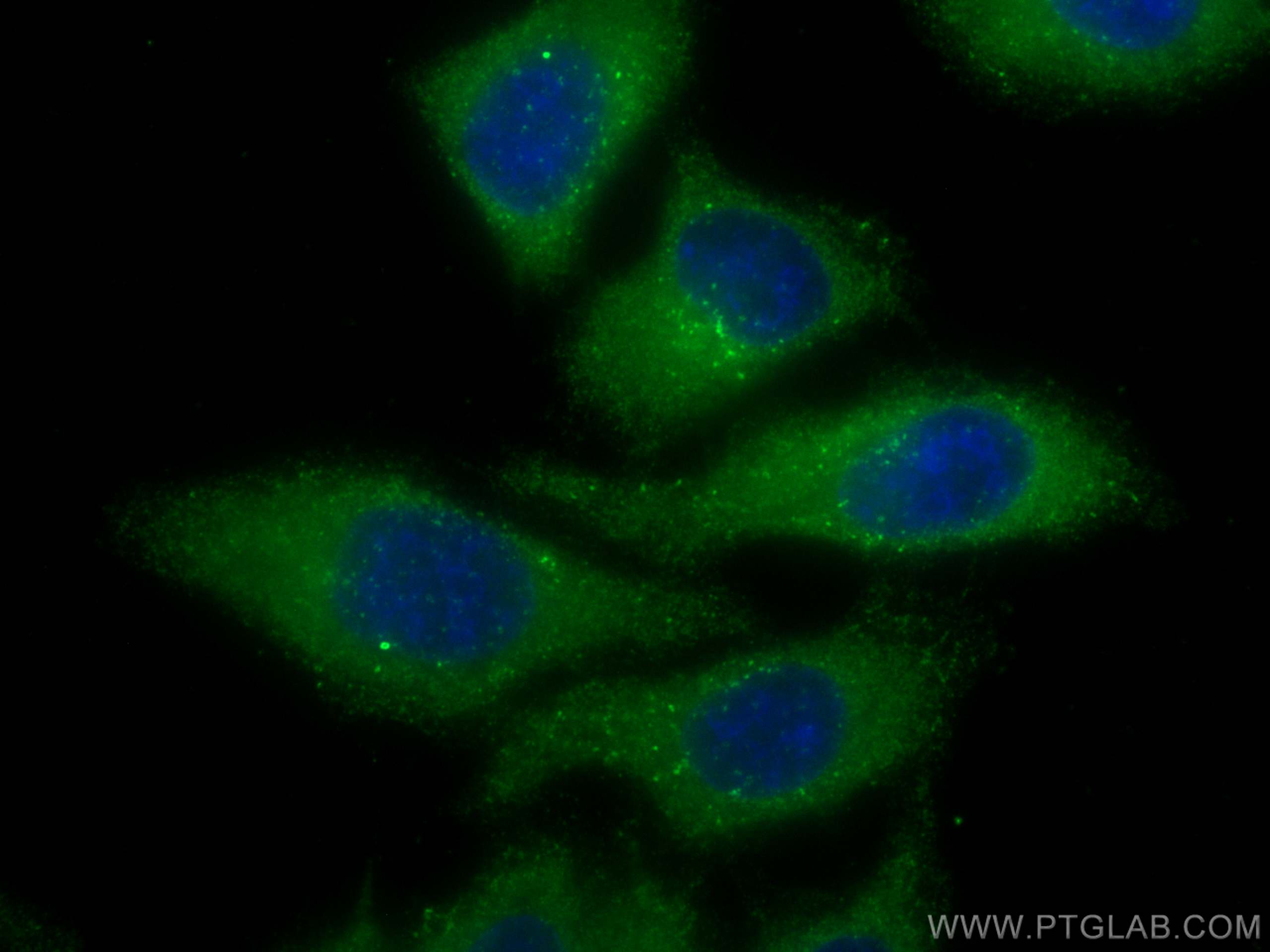Ferritin light chain Monoklonaler Antikörper
Ferritin light chain Monoklonal Antikörper für WB, IHC, IF/ICC, ELISA
Wirt / Isotyp
Maus / IgG1
Getestete Reaktivität
human, Maus und mehr (1)
Anwendung
WB, IHC, IF/ICC, ELISA
Konjugation
Unkonjugiert
CloneNo.
1F9F5
Kat-Nr. : 68068-1-Ig
Synonyme
Geprüfte Anwendungen
| Erfolgreiche Detektion in WB | A549-Zellen, HeLa-Zellen, HepG2-Zellen, humanes Plazenta-Gewebe |
| Erfolgreiche Detektion in IHC | Maushirngewebe, humanes Kolonkarzinomgewebe, humanes Leberkarzinomgewebe, humanes Prostatakarzinomgewebe Hinweis: Antigendemaskierung mit TE-Puffer pH 9,0 empfohlen. (*) Wahlweise kann die Antigendemaskierung auch mit Citratpuffer pH 6,0 erfolgen. |
| Erfolgreiche Detektion in IF/ICC | HepG2-Zellen |
Empfohlene Verdünnung
| Anwendung | Verdünnung |
|---|---|
| Western Blot (WB) | WB : 1:5000-1:50000 |
| Immunhistochemie (IHC) | IHC : 1:500-1:2000 |
| Immunfluoreszenz (IF)/ICC | IF/ICC : 1:400-1:1600 |
| It is recommended that this reagent should be titrated in each testing system to obtain optimal results. | |
| Sample-dependent, check data in validation data gallery | |
Veröffentlichte Anwendungen
| WB | See 13 publications below |
| IHC | See 1 publications below |
Produktinformation
68068-1-Ig bindet in WB, IHC, IF/ICC, ELISA Ferritin light chain und zeigt Reaktivität mit human, Maus
| Getestete Reaktivität | human, Maus |
| In Publikationen genannte Reaktivität | human, Maus, Ratte |
| Wirt / Isotyp | Maus / IgG1 |
| Klonalität | Monoklonal |
| Typ | Antikörper |
| Immunogen | Ferritin light chain fusion protein Ag20637 |
| Vollständiger Name | ferritin, light polypeptide |
| Berechnetes Molekulargewicht | 19 kDa |
| Beobachtetes Molekulargewicht | 18-20 kDa |
| GenBank-Zugangsnummer | BC008439 |
| Gene symbol | Ferritin light chain |
| Gene ID (NCBI) | 2512 |
| Konjugation | Unkonjugiert |
| Form | Liquid |
| Reinigungsmethode | Protein-G-Reinigung |
| Lagerungspuffer | PBS with 0.02% sodium azide and 50% glycerol |
| Lagerungsbedingungen | Bei -20°C lagern. Nach dem Versand ein Jahr lang stabil Aliquotieren ist bei -20oC Lagerung nicht notwendig. 20ul Größen enthalten 0,1% BSA. |
Hintergrundinformationen
FTL belongs to the ferritin family. It stores iron in a soluble, non-toxic, readily available form. FTL is important for iron homeostasis. It plays a role in delivery of iron to cells. FTL mediates iron uptake in capsule cells of the developing kidney. Mutation of FTL will cause hereditary hyperferritinemia-cataract syndrome (HHCS) or neurodegeneration with brain iron accumulation type 3 (NBIA3). Ferritin light polypeptide (FTL) and ferritin heavy polypeptide (FTH1) were the main constituents the striatum and cerebellar cortex revealed.
Protokolle
| PRODUKTSPEZIFISCHE PROTOKOLLE | |
|---|---|
| WB protocol for Ferritin light chain antibody 68068-1-Ig | Protokoll herunterladen |
| IHC protocol for Ferritin light chain antibody 68068-1-Ig | Protokoll herunterladenl |
| IF protocol for Ferritin light chain antibody 68068-1-Ig | Protokoll herunterladen |
| STANDARD-PROTOKOLLE | |
|---|---|
| Klicken Sie hier, um unsere Standardprotokolle anzuzeigen |
Publikationen
| Species | Application | Title |
|---|---|---|
J Gastroenterol Indoleamine 2,3-dioxygenase 1-mediated iron metabolism in macrophages contributes to lipid deposition in nonalcoholic steatohepatitis | ||
J Neuroimmune Pharmacol Ghrelin Induces Ferroptosis Resistance and M2 Polarization of Microglia to Alleviate Neuroinflammation and Cognitive Impairment in Alzheimer's Disease | ||
Inflammopharmacology Sulfasalazine promotes ferroptosis through AKT-ERK1/2 and P53-SLC7A11 in rheumatoid arthritis | ||
J Nutr Biochem Curcumol ameliorates alcohol and high-fat diet-induced fatty liver disease via modulation of the Ceruloplasmin/iron overload/mtDNA signaling pathway | ||
J Ethnopharmacol Anti-papillary thyroid carcinoma effects of dioscorea bulbifera L. through ferroptosis and the PI3K/AKT pathway based on network pharmacology and experimental validation | ||
Biochim Biophys Acta Mol Basis Dis FTO alleviated ferroptosis in septic cardiomyopathy via mediating the m6A modification of BACH1 |
